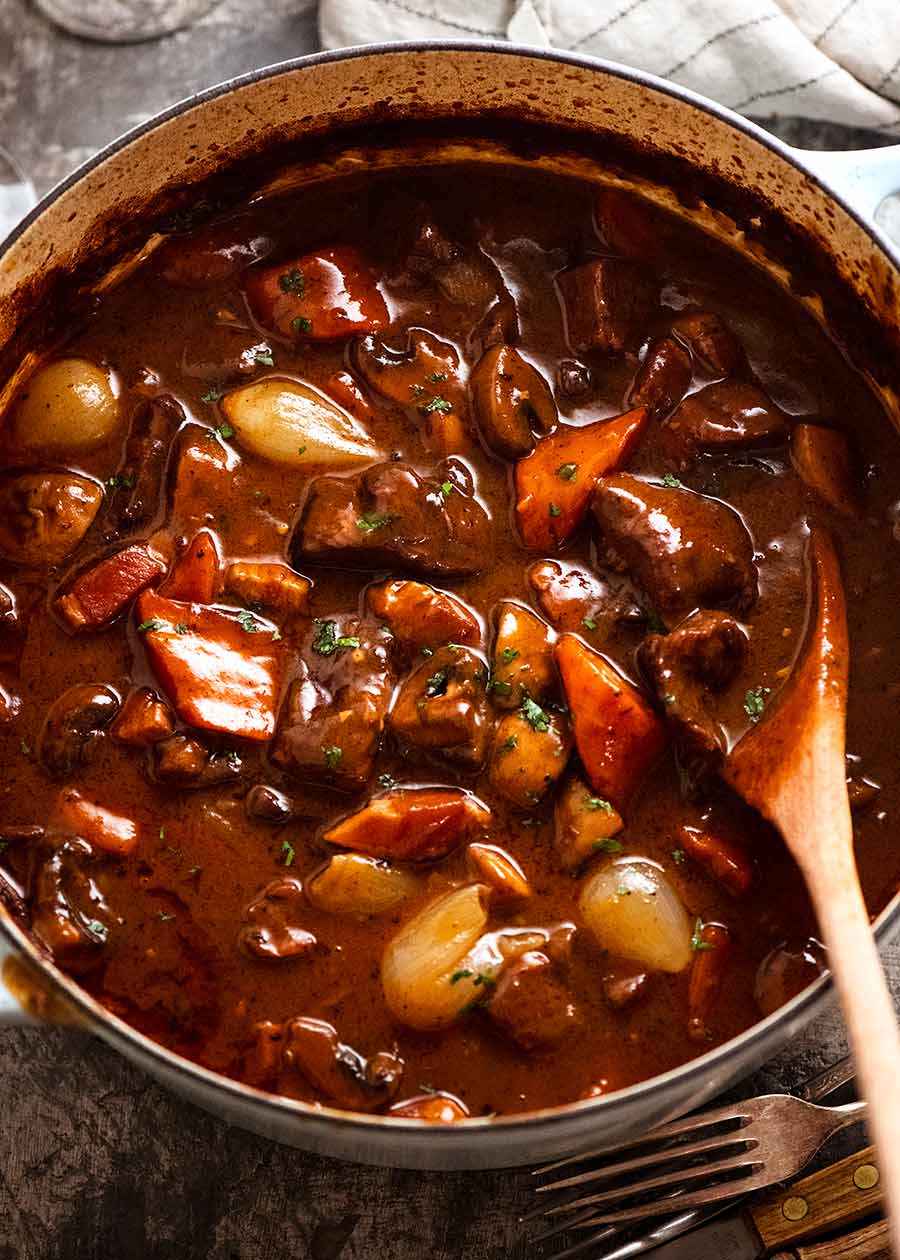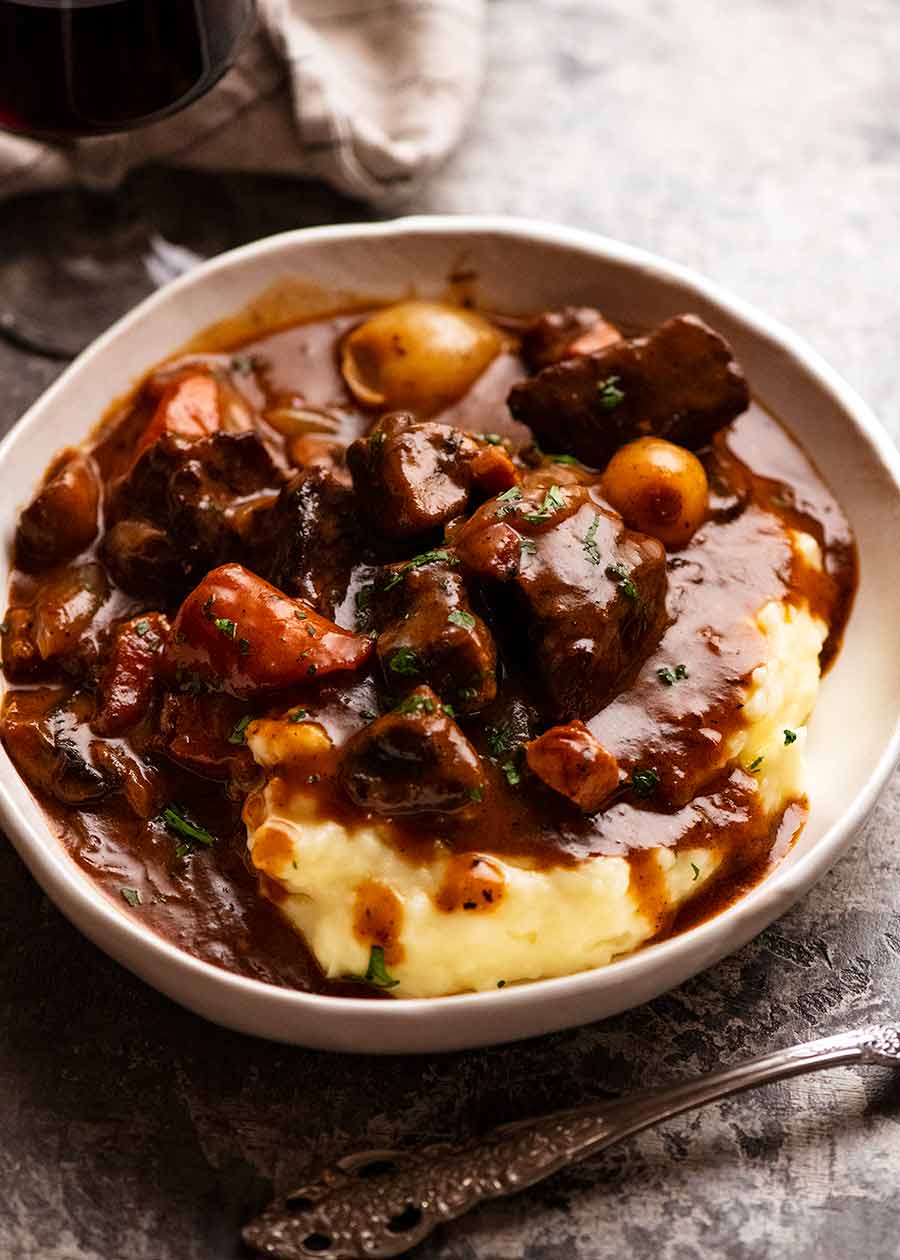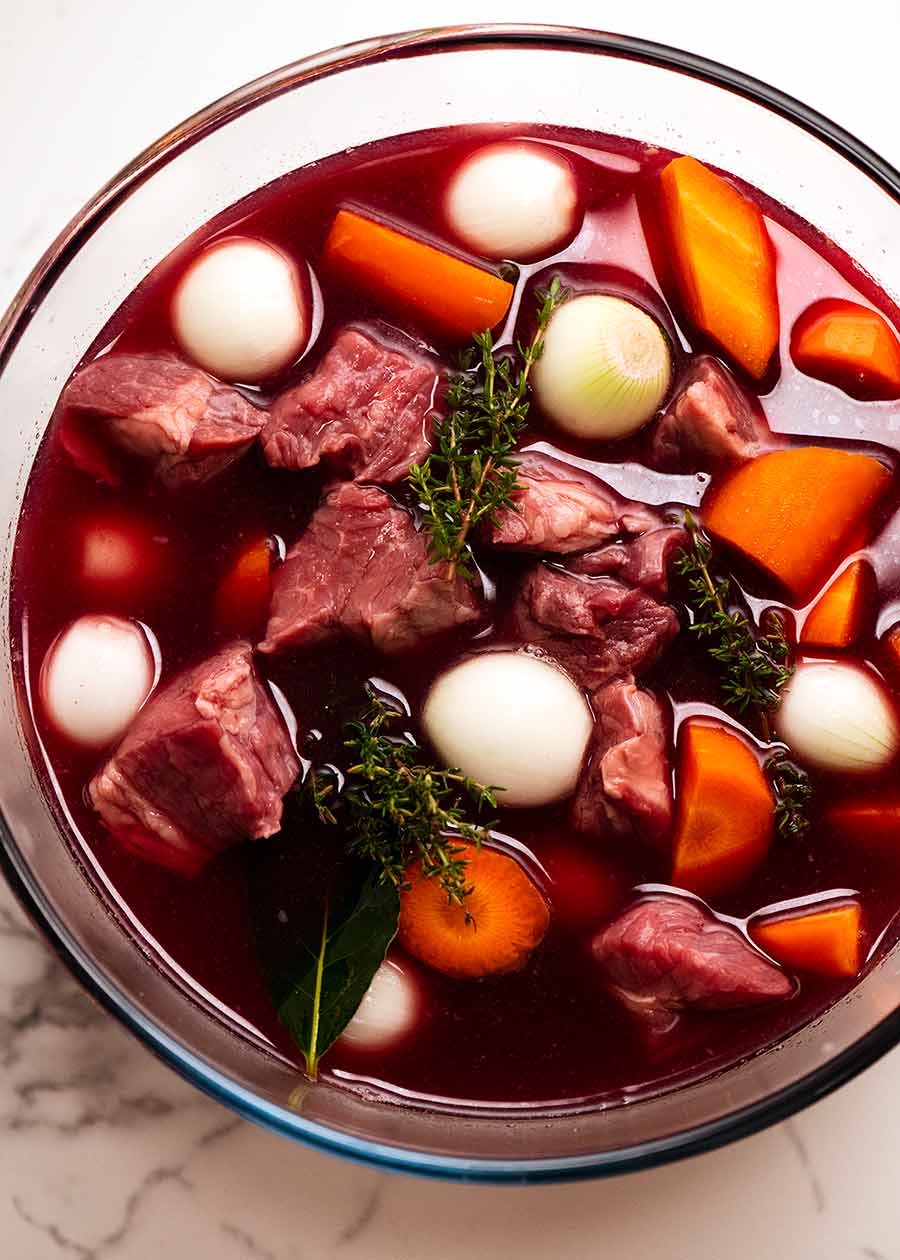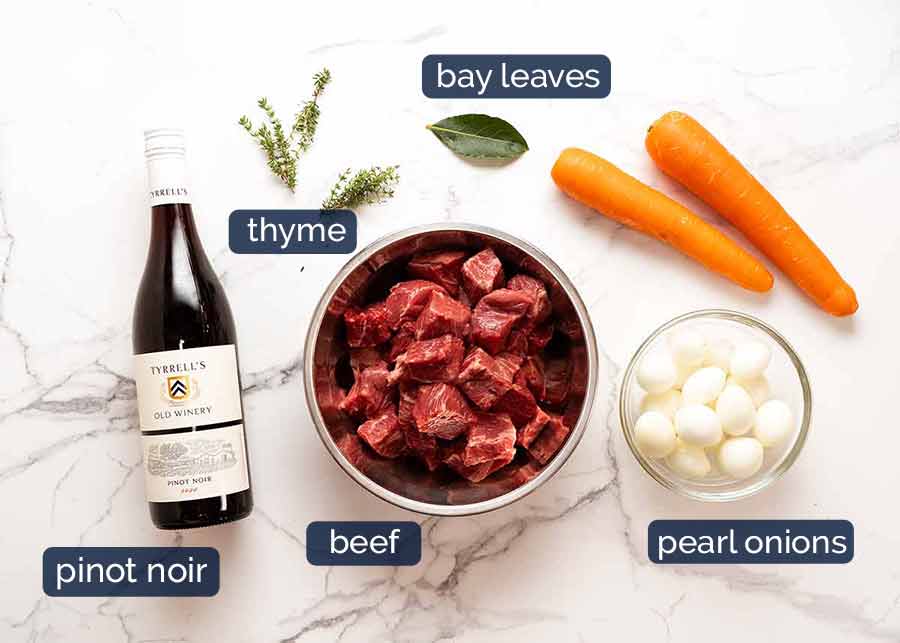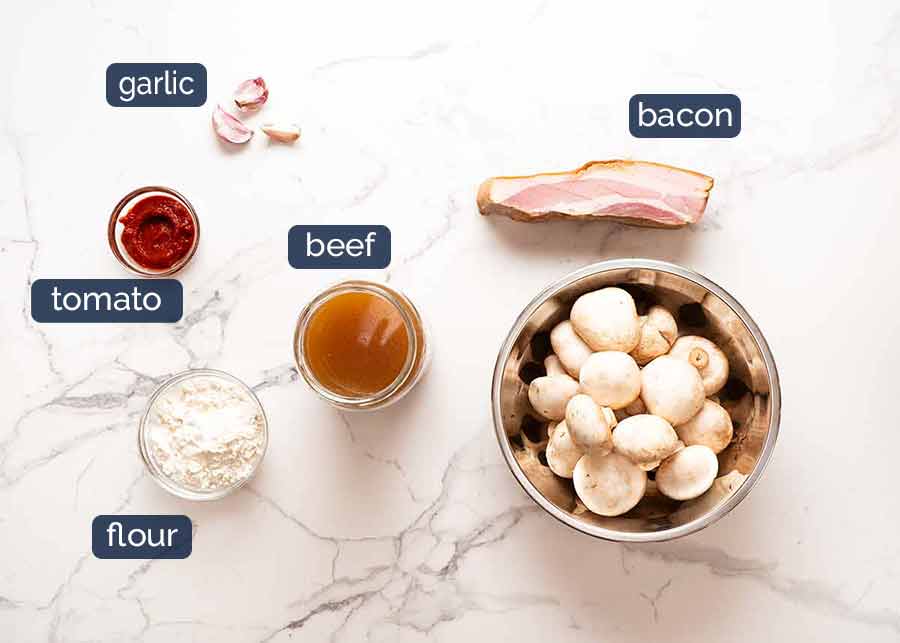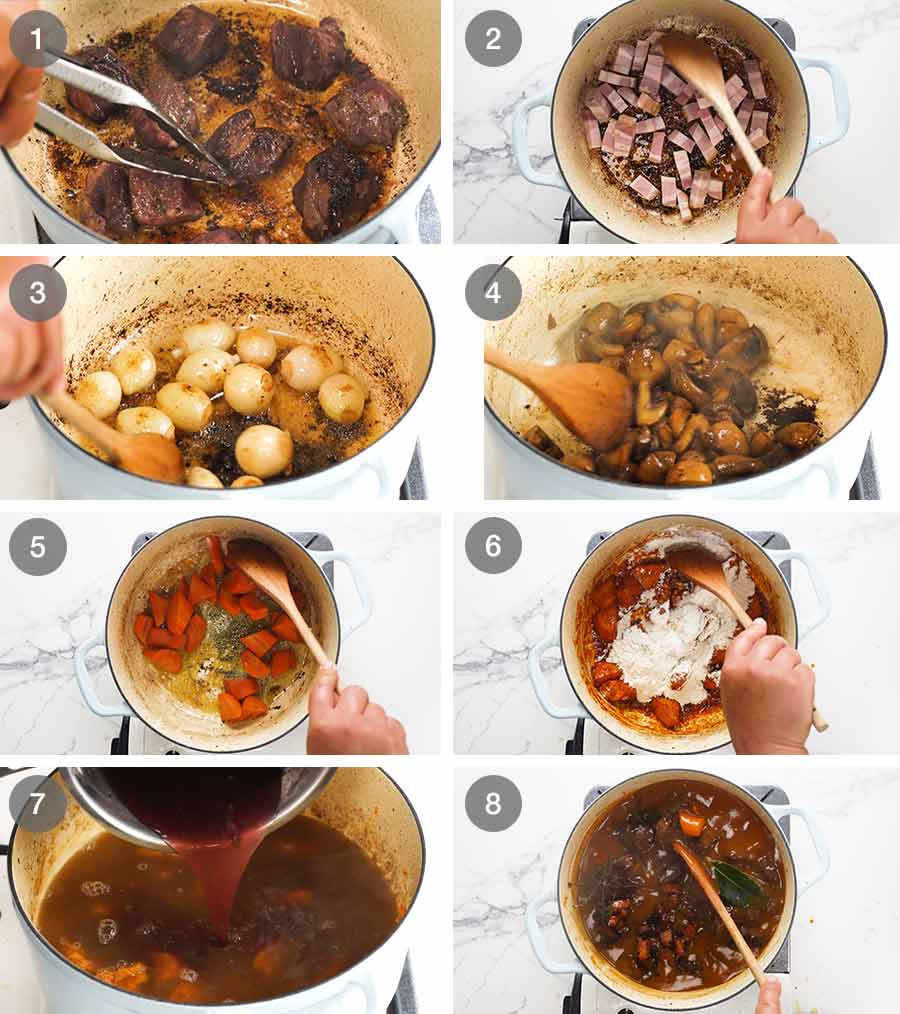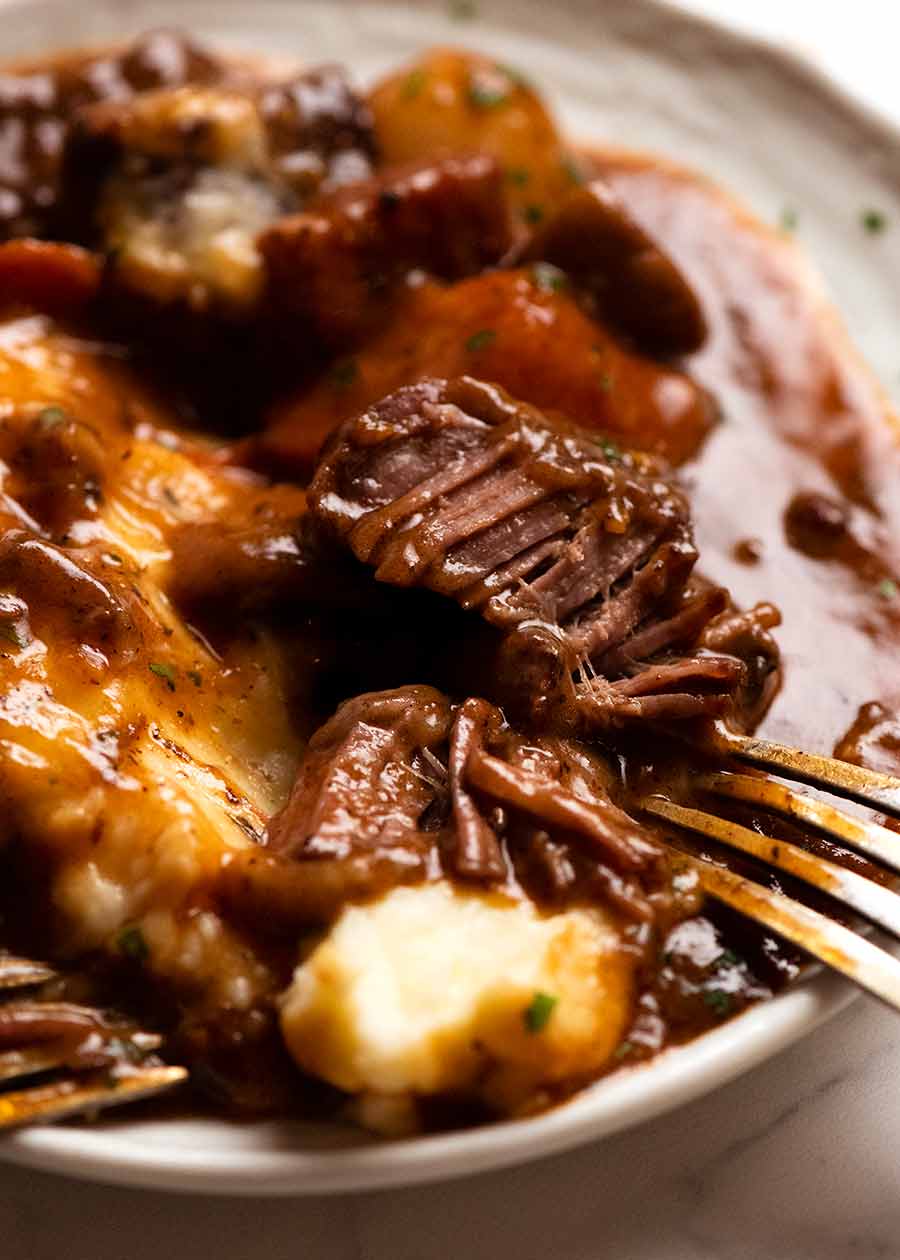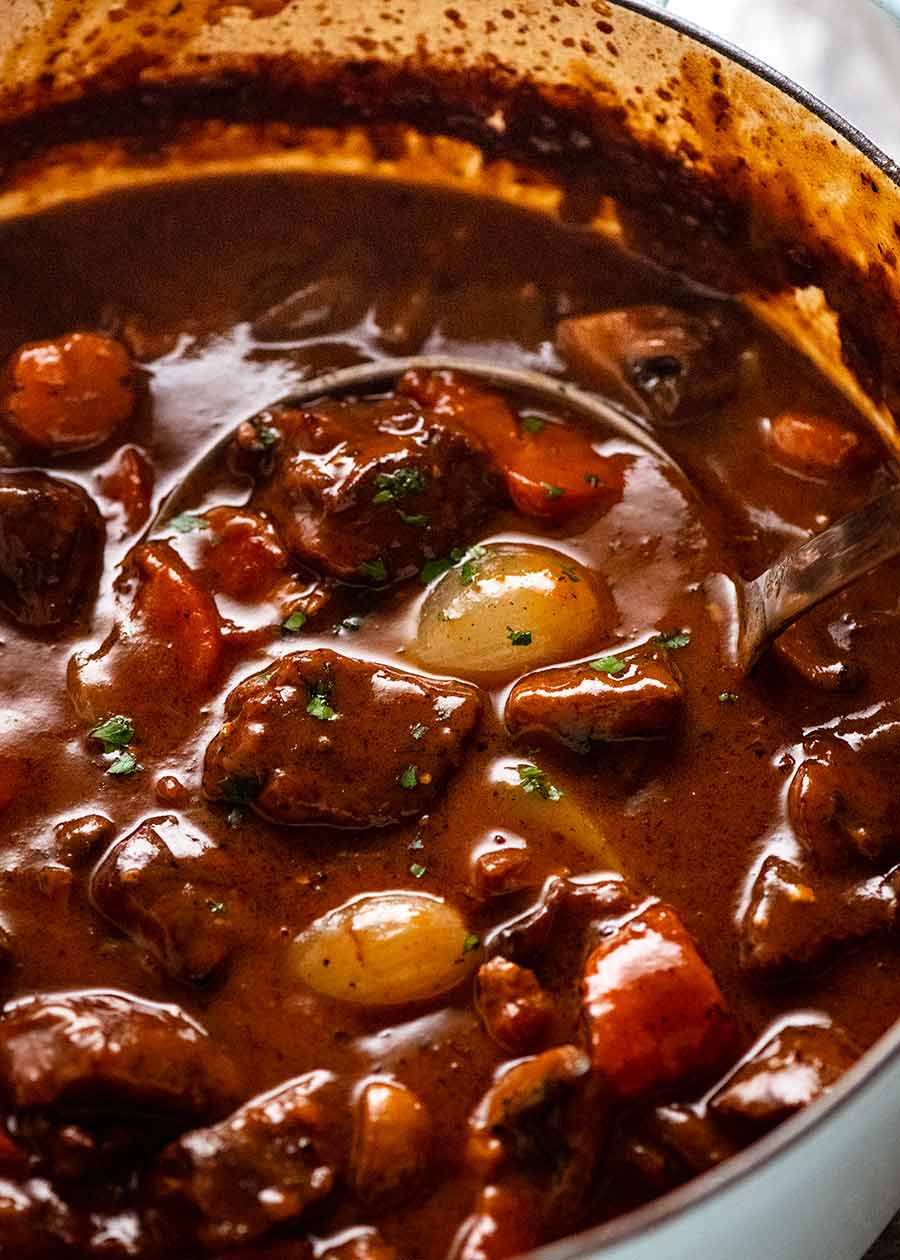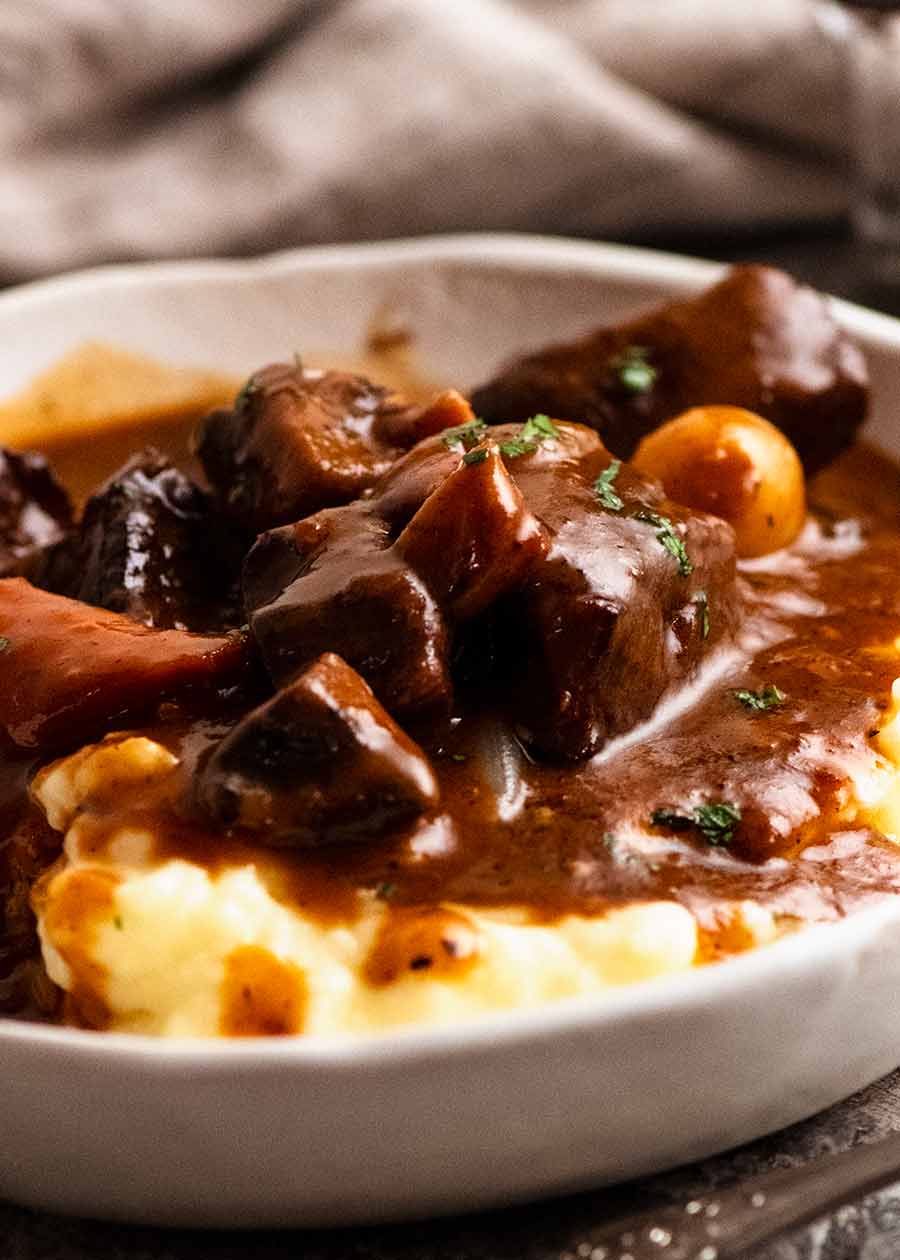For the most magnificent stew of your life, start this 2 days before you plan to serve it, do not shortcut pan-roasting ingredients individually, and use homemade beef stock!
Beef Bourguignon
One of my fondest memories of travels in Burgundy was discovering family-run bistros in small villages that served traditional French fare so incredible, you’d swear you were in a hidden Michelin star restaurant. And being right in the region from which Beef Bourguignon hails, it was hard to resist ordering this iconic dish time and time again. Every bistro had their secret recipe, and no two were exactly the same. Except, perhaps, the quality that each of them were to me, the most incredible Beef Burgundy I’ve ever had in my life!. I just need to add one more to that list though: This Beef Bourguignon recipe you’re reading. It was created with the assistance of a classically trained French chef from Burgundy residing right here in Sydney, Jean-Baptiste Alexandre of Baptiste & Wilson. For a dish this iconic, I refused to just settle for any old recipe. This Beef Bourguignon is hands-down better than any I’ve made in my life – including Julia Child’s recipe.
What goes in Beef Bourguignon
There are two main components to making Beef Bourguignon:
1. Red wine marinade for beef
Here’s what you need for the red wine-marinated beef:
Chuck beef – Not all beef is created equal, even when slow-cooked into fall-apart submission! Look for good quality chuck beef, ribboned with fat for the juiciest result. Also, be sure to either buy BIG pre-cut pieces – as in 4-5 cm / 2” cubes – or a one single piece which you slice up yourself. If you purchase pre-cut pieces that are too small, they will cook faster than the time it takes for the sauce to develop enough flavour;Pinot noir – Beef Bourguignon is also known as Beef Burgundy, and thus the wine called for is a Pinot Noir – the most famous variety of wine produced in the Burgundy region of France. Using a lighter style wine might sound unexpected for a hearty stew, but the more delicate flavour compared to bolder wines like Shiraz makes it ideal for using as a marinade so the red wine flavour doesn’t overwhelm the natural beef flavour.We’re using a whole bottle here. Sorry folks, you’ll need another bottle for drinking!Thyme and bay leaves – Classic herb aromatics;Carrot – Just your everyday standard carrots will do fine;Pearl onions – These small onions are the traditional onions used in Beef Bourguignon but are annoyingly difficult to find here in Australia. I use what’s sold as “pickling onions” which are virtually the same but slightly larger, so I peel an extra layer or two off the surface to make them pearl onion size (~3 cm / 1.2″ diameter).Alternative: Just use slices of a normal onion. The end result tastes the same, I promise!
2. The stew
And here’s what goes into the stew: Also, be sure to either buy BIG pre-cut pieces – as in 4-5 cm / 2” cubes – or a one single piece which you slice up yourself. If you purchase pre-cut pieces that are too small, they will cook faster than the time it takes for the sauce to develop enough flavour; Using a lighter style wine might sound unexpected for a hearty stew, but the more delicate flavour compared to bolder wines like Shiraz makes it ideal for using as a marinade so the red wine flavour doesn’t overwhelm the natural beef flavour. We’re using a whole bottle here. Sorry folks, you’ll need another bottle for drinking! Alternative: Just use slices of a normal onion. The end result tastes the same, I promise!
Beef stock – The single biggest variable on which a stew hinges, differentiating a good home-cooked stew and a quality, why-does-this-restaurant-stew-taste-so-damned-good result.Homemade beef stock trumps store-bought. But if you’re going down the store-bought path, try to opt for a good quality stock from the butcher rather than the cheap mass-produced stuff. The difference I promise is remarkable.Having said that though, I would never say that this is not worth making with basic supermarket beef stock. It is, oh-so-very worth making!Bacon – Get slab bacon from your butcher if you can, so you can cut it yourself into big chunky lardons (batons). A proper bite of meaty bacon lardons is part of the awesomeness that is Beef Bourguignon. If you can’t find slab bacon, try speck (which in Australia seems to usually smoked pork belly chunks). Failing that, normal bacon slices works just fine too;Mushrooms – Just your everyday normal mushrooms. Cut large ones into quarters, medium ones in half;Garlic – Flavouring (rare to see a savoury dish around here without it!);Tomato paste – For a touch of tang, to help thicken the sauce, for flavour and for colour; andFlour – For thickening the sauce.
How to make Beef Bourguignon
For the absolute best results, start this 2 days before you plan to serve it to allow for: Homemade beef stock trumps store-bought. But if you’re going down the store-bought path, try to opt for a good quality stock from the butcher rather than the cheap mass-produced stuff. The difference I promise is remarkable. Having said that though, I would never say that this is not worth making with basic supermarket beef stock. It is, oh-so-very worth making! If you can’t find slab bacon, try speck (which in Australia seems to usually smoked pork belly chunks). Failing that, normal bacon slices works just fine too;
Overnight marinating of the beef; andLeaving the finished stew overnight to let the flavours develop even further.
Part 1: Beef marinade
Part 2: Making the stew
It’s well worth taking the time to brown each of the ingredients individually before slow cooking in the braising liquid. The browning adds a depth of flavour you just can’t achieve by dumping everything in at the same time!
Part 3. Slow-cooking
This is all about time – and not forgetting to add the onion and mushrooms partway through! Be sure to use enough oil so the beef browns rather than burns. Work in batches and don’t crowd the pot otherwise the beef will just braise instead of brown. Once browned, remove into a bowl;
Highly recommended: Leave overnight before serving
As with all stews, Beef Bourguignon benefits greatly if you can leave it overnight which lets the flavours develop further and meld together even better. If it’s too thin, just simmer gently on low heat. It won’t take long to reduce and thicken. If the sauce is too thick, add a splash of water then simmer gently to bring it together again. Also, don’t forget to check if there’s enough salt in the sauce! Taste and adjust as necessary. 🙂 Don’t get me wrong, it is sensational served on the day it’s made. But it’s even better the next day!
What to serve with Beef Bourguignon
I suppose one could serve this over a short pasta, polenta, or a grain. But for me, I would never contemplate anything other than buttery Mashed Potatoes! And while I usually offer Paris Mash as an even more luxe alternative, I actually think it’s too rich for Beef Burgundy. Complete your Burgundy experience with a fresh French Bistro Salad on the side. You’ll find variations of this salad served all over France, for a clean and palate-cleansing side intended to serve alongside hearty mains like this. Enjoy! – Nagi x
Watch how to make it
Life of Dozer
Where he’s been positioned while I’ve been bashing out this recipe. Notice how he sprawls across two seats – and also notice how I thoughtfully pushed them together for him. #sucker
